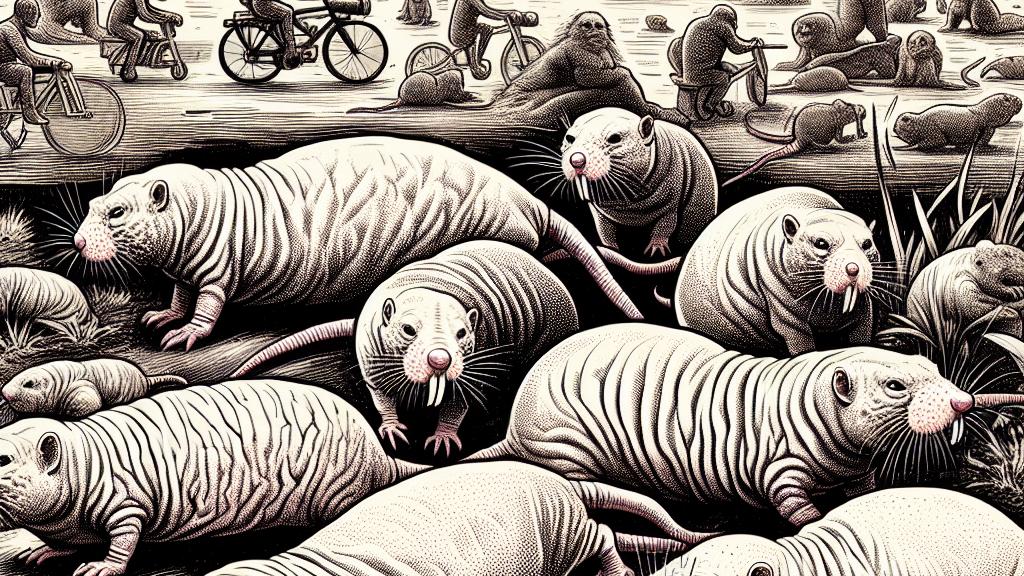The Remarkable Lifespan and Genetics of Naked Mole Rats
Overview
- Naked mole rats, found in East Africa, possess an astonishing ability to live over 30 years, making them unique among rodents.
- Their fascinating genetic traits not only grant them superior resilience against diseases like cancer but also captivate scientists worldwide.
- Living in complex, eusocial colonies, these creatures showcase teamwork and organization that mirror some insect societies, enhancing their chances of survival.

Incredible Longevity of Naked Mole Rats
Naked mole rats thrive in the tough environments of East Africa, notably Somalia, Ethiopia, and Kenya. Imagine that these quirky, hairless rodents can astonishingly reach lifespans exceeding 30 years! This impressive longevity places them as the longest-lived rodents in the animal kingdom. Unlike most rodents, which often face numerous health issues in old age, naked mole rats seem to outsmart the aging process. Scientists are racing to uncover the biological secrets behind this extraordinary resistance to aging, which could unlock new pathways to enhance human lifespan. Their ability to live such long and healthy lives serves as a fascinating model, opening discussions about the potential lessons we can learn about longevity.
Decoding Their Unique Genetic Blueprint
When researchers dive into the genomes of naked mole rats, they unveil remarkable insights into their health and longevity. Studies have identified 'ghost' genes—genetic elements that operate at low activity levels or remain dormant. These ghost genes are thought to protect naked mole rats from various inherited diseases, an insight that sharply contrasts with the genetic misfortunes that frequently affect other mammals. Furthermore, scientists are intrigued by the absence of cancer within these creatures; it’s a testament to their unique biology. For instance, understanding how they resist cancer could revolutionize approaches to disease prevention and treatment in humans, offering invaluable clues that could lead to groundbreaking advancements in healthcare. Such discoveries highlight not only the uniqueness of naked mole rats but also their potential implications for mankind.
Eusocial Behavior: A Marvel of Teamwork and Survival
Beyond their extraordinary longevity, naked mole rats demonstrate an equally fascinating social structure, making them one of only two mammal species known to be eusocial. Imagine the dynamics of a colony that can include anywhere from 20 to an extraordinary 300 residents! Within these colonies, roles are perfectly delineated: there’s a queen, a select number of soldiers, and diligent worker rats. This hierarchical organization doesn't just boost their survival rate against predators—mostly snakes—but also facilitates efficient resource sharing and communal living. Their social behavior vividly illustrates the importance of cooperation and teamwork, mirroring characteristics seen in insect societies. Such compelling dynamics not only deepen our understanding of animal behaviors but also prompt further reflection on the parallels in human social structures and the inherent value of collaboration in enhancing survival and success.

Loading...